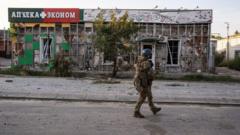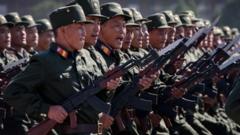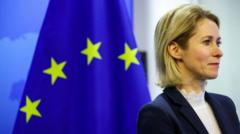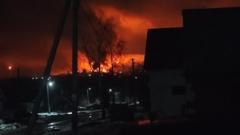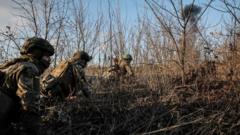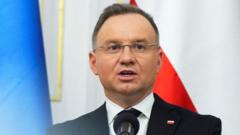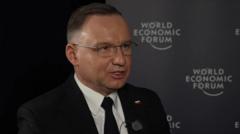In the backdrop of the Russia-Ukraine war, a unique travel experience unfolds for world leaders venturing into the heart of Ukraine as they rely on the Ukrainian national railway, Ukrzaliznytsia, to navigate their way to Kyiv.
Inside the Journey of Dignitaries to Ukraine: The Unique Experience of 'Rail Force One'

Inside the Journey of Dignitaries to Ukraine: The Unique Experience of 'Rail Force One'
With security fears suspending air travel to Ukraine, world leaders opt for a 10-hour train ride to Kyiv, reflecting on both the country’s plight and their roles in the ongoing conflict.
The ongoing conflict between Russia and Ukraine has transformed the ordinary travel routines of global dignitaries visiting Kyiv. With airspace over Ukraine heavily restricted and civilian flight operations paused due to security concerns, many leaders find themselves accustomed to enduring the bumpy yet vital 10-hour overnight train journey—a unique aspect referred to as 'Rail Force One'.
Ursula von der Leyen, the European Union’s top official, has made this trip to Kyiv eight times since Russia's invasion began, often filling her time with preparatory work and reading literature on Ukraine. Reflecting on the weariness of fellow leaders, such as U.S. Secretary of State Antony Blinken, she noted the telltale signs of exhaustion that accompany such strenuous travel, humorously associating it with the rhythmic clatter of the train wheels.
For millions of Ukrainians, trains have become indispensable for moving in and out of the country amidst wartime. While common travelers cope with less luxurious conditions in sleeper cabins, world leaders are treated to a more comfortable experience due to the V.I.P. services offered by Ukrzaliznytsia. These specialized trains are outfitted with private sleeping quarters, dedicated conference rooms, and fully-equipped kitchens where attendants prepare gourmet meals for the esteemed guests.
In February, President Biden also experienced this unique form of travel on his surprise visit to President Volodymyr Zelensky, utilizing the train to conduct meetings and strategize during the journey. The reliability and strategic necessity of rail transport have thus become a crucial chapter in the narrative of international diplomacy amidst the ongoing war—a stark reminder of the challenges faced in times of conflict and the resilience of Ukraine's infrastructure.
Ursula von der Leyen, the European Union’s top official, has made this trip to Kyiv eight times since Russia's invasion began, often filling her time with preparatory work and reading literature on Ukraine. Reflecting on the weariness of fellow leaders, such as U.S. Secretary of State Antony Blinken, she noted the telltale signs of exhaustion that accompany such strenuous travel, humorously associating it with the rhythmic clatter of the train wheels.
For millions of Ukrainians, trains have become indispensable for moving in and out of the country amidst wartime. While common travelers cope with less luxurious conditions in sleeper cabins, world leaders are treated to a more comfortable experience due to the V.I.P. services offered by Ukrzaliznytsia. These specialized trains are outfitted with private sleeping quarters, dedicated conference rooms, and fully-equipped kitchens where attendants prepare gourmet meals for the esteemed guests.
In February, President Biden also experienced this unique form of travel on his surprise visit to President Volodymyr Zelensky, utilizing the train to conduct meetings and strategize during the journey. The reliability and strategic necessity of rail transport have thus become a crucial chapter in the narrative of international diplomacy amidst the ongoing war—a stark reminder of the challenges faced in times of conflict and the resilience of Ukraine's infrastructure.


